Sourcing quality stainless steel cups feels overwhelming. You worry about safety, sustainability, and supplier reliability. This guide simplifies your decisions and helps you choose wisely.
Sourcing stainless steel cups effectively means focusing on material grade, safety certifications, supplier transparency, and manufacturing quality. This ensures you get durable, safe, and ethically produced products for your brand, meeting the evolving demands of today's market.
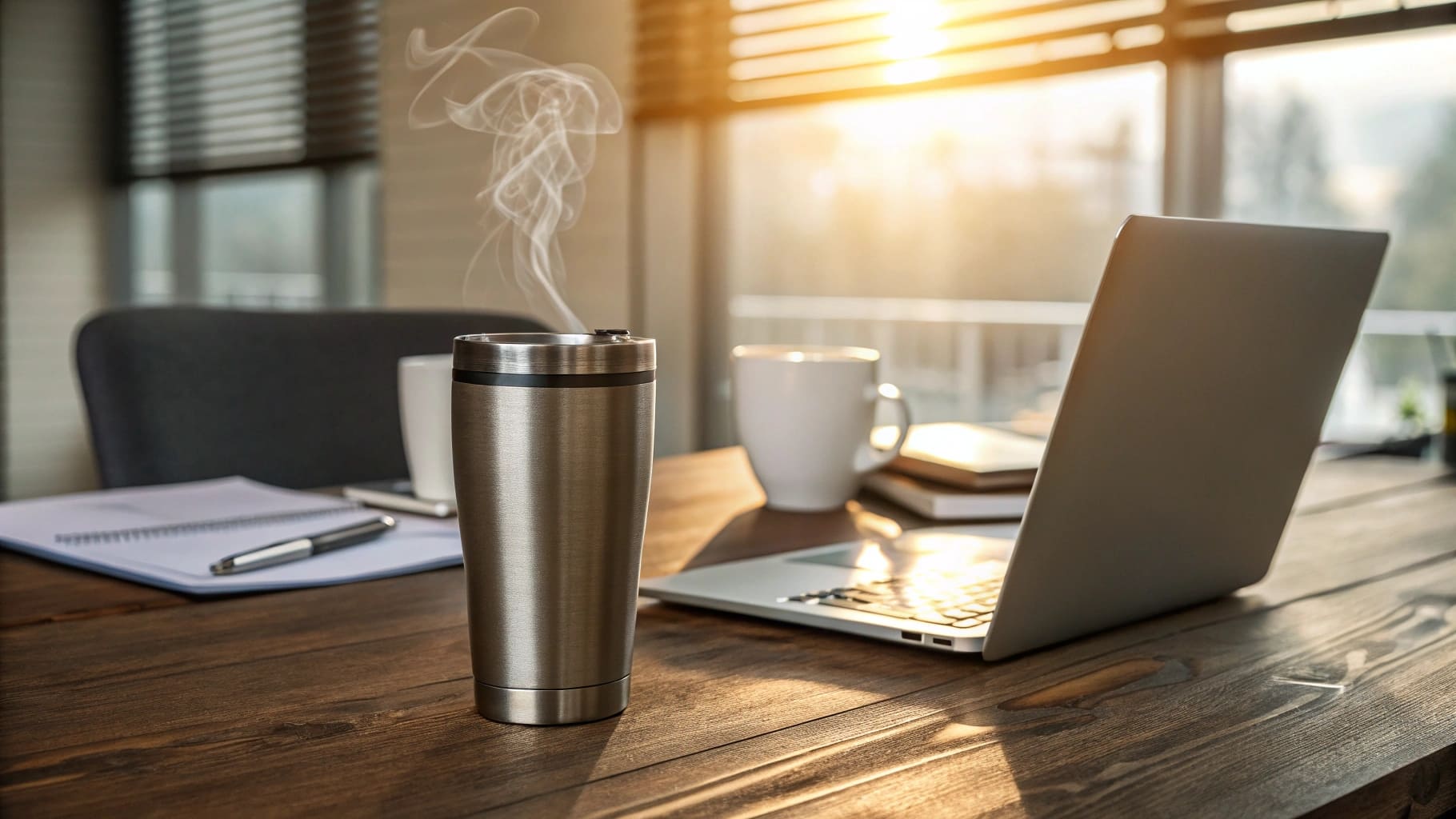
As someone who's navigated the ins and outs of stainless steel drinkware manufacturing for years here at Icobottle, I've seen firsthand how complex sourcing can seem. I've talked to many B2B buyers, procurement officers like Mark Shenng from Canada, who are assertive and know what they want: top quality at competitive prices. They're concerned about the whole product lifecycle. It's no longer just about volume. They ask tough questions about safety and sustainability. But finding the right information doesn't have to be a struggle. Let's break down the key questions you, as an importer or brand owner, are likely asking. Understanding these aspects will empower you to make informed decisions and find reliable partners. So, let's dive in and clear up some of the common concerns you might have.
Can Stainless Steel Cups Be Recycled?
Problem: Unsure about the eco-friendliness of stainless steel? Agitation: You want sustainable products but fear they'll end up in landfills. Solution: Good news! Stainless steel is highly recyclable.
Yes, stainless steel cups are highly recyclable. Stainless steel can be melted down and reformed into new products repeatedly without losing its quality, making it a very circular material and an excellent choice for environmentally conscious brands.
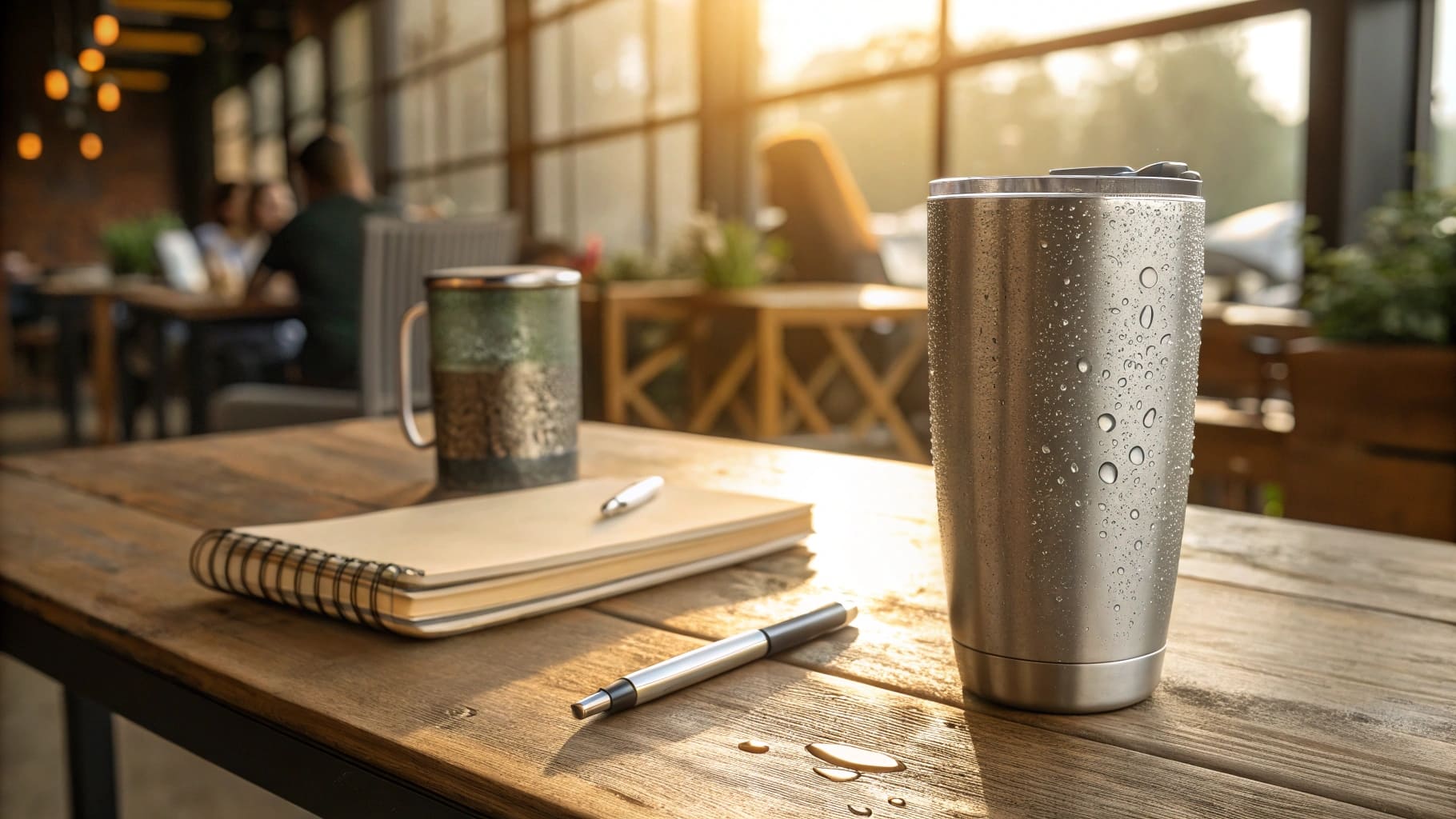
When we talk about sustainability, recyclability is a huge factor. I often get asked by clients, "Aries, how recyclable are these cups really?" It's a fair question. The good news is, stainless steel is one of the most recycled materials on the planet.
The Recycling Process:
Stainless steel recycling is a well-established process.
- Collection: Used stainless steel products are collected.
- Sorting: They are sorted using magnets and sensors to separate different types of metals.
- Shredding: The sorted steel is shredded into smaller pieces.
- Melting: These pieces are melted in a furnace.
- Purification: The molten metal is analyzed and purified to meet specific standards.
- Solidification: The purified molten steel is then cast into new shapes, like slabs or billets, ready to be made into new products.
Why is this beneficial?
The beauty of stainless steel is that it doesn't degrade during recycling. It retains its original properties. This means it can be recycled over and over again without any loss in quality. This "closed-loop" recycling process significantly reduces the need for virgin raw materials, which in turn saves energy and lessens environmental impact. For businesses like yours, highlighting the recyclability of your stainless steel cups can be a strong selling point. It shows a commitment to sustainability, which is increasingly important to end consumers. At Icobottle, we design our products with their end-of-life in mind, encouraging recycling.
| Benefit of Steel Recycling | Impact |
|---|---|
| Resource Conservation | Reduces need for new iron ore, nickel |
| Energy Saving | Uses less energy than primary production |
| Lower Emissions | Reduces CO2 and other pollutants |
| Waste Reduction | Diverts material from landfills |
It’s a win-win for businesses and the planet.
Is It OK to Drink from Stainless Steel Cups?
Problem: Worried about chemicals leaching from your cups? Agitation: You need to ensure product safety for your customers. Solution: High-quality stainless steel is a safe choice.
Yes, it's generally very safe to drink from stainless steel cups, especially those made from food-grade stainless steel like 18/8 (Type 304). These types of steel are inert and don't leach harmful chemicals into your drinks.

Safety is paramount, especially when it comes to products that come into contact with food and beverages. I always tell my clients, like Mark, that the type of stainless steel matters immensely.
Food-Grade is Key:
The most common and trusted type for drinkware is 18/8 stainless steel1, also known as Type 304 stainless steel. The "18/8" refers to its composition: 18% chromium and 8% nickel.
- Chromium provides corrosion resistance, preventing rust.
- Nickel enhances formability and also contributes to corrosion resistance.
This composition makes the steel highly resistant to acids found in common drinks like coffee, tea, juice, and even wine. It's non-reactive, meaning it won't impart any metallic taste or leach harmful substances into your beverages. This is a critical point for importers and brands because consumer trust hinges on product safety.
Why it's a Safe Choice:
- No BPA or Phthalates: Unlike some plastic containers, stainless steel is naturally free from BPA (bisphenol A), phthalates, and other potentially harmful endocrine disruptors.
- Non-Porous: The surface of stainless steel is non-porous, which means it doesn't harbor bacteria or absorb odors and flavors from previous drinks, provided it's cleaned properly.
- Durability: Its resistance to rust and corrosion means the material integrity is maintained over time, further ensuring safety.
At Icobottle, we exclusively use high-quality, food-grade stainless steel2 (primarily 304, and sometimes 316 for specific applications requiring even higher corrosion resistance). We ensure our materials are rigorously tested to meet international standards like FDA and LFGB. This commitment to quality materials is fundamental to providing safe and reliable products.
How Long Do Stainless Steel Cups Last?
Problem: Tired of products that break easily? Agitation: Constantly replacing items costs money and harms your brand's image. Solution: Stainless steel cups are built to last.
Stainless steel cups can last for many years, even decades, with proper care. Their remarkable durability comes from the material's inherent resistance to rust, corrosion, and everyday impacts.
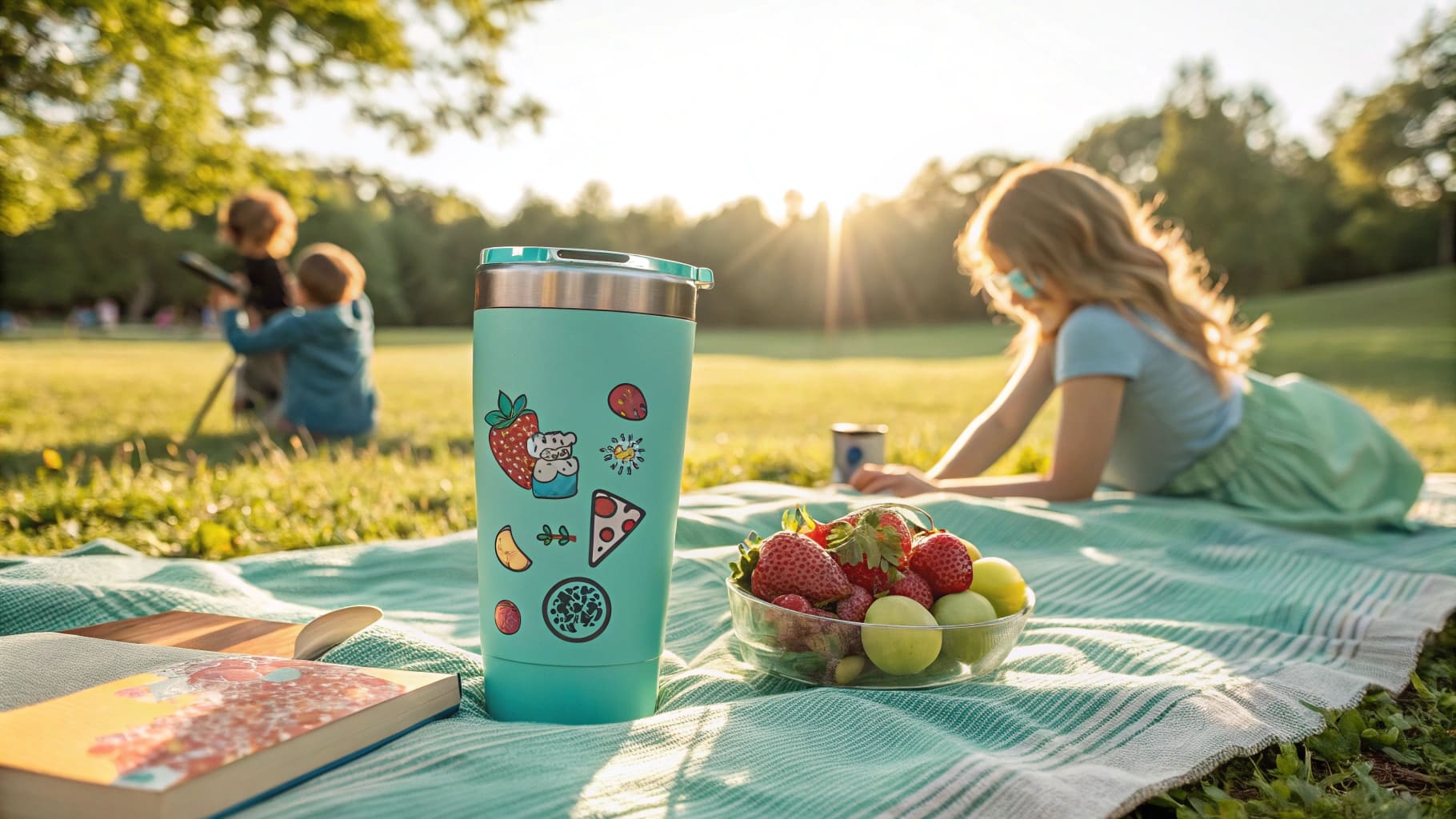
One of the biggest advantages of stainless steel cups, and something my B2B clients really appreciate, is their incredible lifespan. When you invest in stainless steel, you're investing in a product that can serve your customers for a very long time.
Factors Influencing Lifespan:
While inherently durable, a few things can affect how long a stainless steel cup lasts:
- Quality of Steel: Higher-grade stainless steel (like 304 or 316) offers better corrosion resistance and overall strength. This is where skimping on quality can backfire.
- Construction Quality: How the cup is made matters. Well-welded seams (if any), a solid base, and quality finishing contribute to longevity. For example, our double-walled vacuum insulated cups at Icobottle are built for robust daily use.
- Care and Maintenance: While low-maintenance, simple care like regular washing and avoiding harsh abrasives can extend its life. Most are dishwasher safe, but handwashing can preserve the finish longer, especially for custom printed cups.
- Usage: A cup used daily in harsh conditions might show wear sooner than one used occasionally indoors, but "wear" for stainless steel is often just cosmetic scratches, not functional failure.
Inherent Advantages:
- Rust and Corrosion Resistance: This is the hallmark of stainless steel. It won't easily rust or degrade when exposed to liquids or moisture.
- Impact Resistance: Stainless steel can withstand drops and bumps much better than glass or ceramic alternatives. It might get a dent, but it's unlikely to shatter.
- Temperature Stability: It doesn't become brittle in cold temperatures or warp easily with heat.
I remember a client who was still using a promotional stainless steel mug we supplied them over ten years ago! That's the kind of durability that provides real value for money and reduces the need for frequent replacements, aligning perfectly with more sustainable consumption patterns. It's a key selling point for any brand looking to offer quality.
Are Stainless Steel Cups Sustainable?
Problem: Seeking eco-conscious products for your brand? Agitation: "Greenwashing" makes it hard to find genuinely sustainable options. Solution: Stainless steel cups offer strong sustainability credentials.
Yes, stainless steel cups are a sustainable choice primarily due to their durability, reusability over countless times, and high recyclability. They significantly help reduce reliance on single-use plastics.

Sustainability is a complex topic, and buyers are right to ask tough questions. When we consider the entire lifecycle, stainless steel cups present a strong case for being an environmentally responsible choice, especially when compared to single-use alternatives.
Key Sustainability Aspects:
- Durability & Reusability: As we've discussed, these cups last for years. This long lifespan means one stainless steel cup can replace hundreds, if not thousands, of single-use plastic or paper cups. This drastically reduces waste generation.
- Recyclability: Stainless steel is 100% recyclable without loss of quality. The infrastructure for steel recycling is well-established globally. This circular potential minimizes landfill burden and the need for virgin raw materials.
- Reduced Environmental Footprint (vs. Plastics): The biggest win is the reduction in plastic pollution. Single-use plastics are a major environmental concern, polluting oceans and ecosystems. Choosing reusable stainless steel directly combats this. While the initial production of stainless steel is energy-intensive, this impact is offset by its long life and high recycling rate.
Considering the Full Picture:
It's true that manufacturing any product has an environmental cost. For stainless steel, this includes mining raw materials (iron ore, chromium, nickel) and the energy used in production. However, when you look at the lifecycle assessment:
- The energy and resources used to produce one stainless steel cup are spread out over its many years of use.
- Compare this to the continuous production, transport, and disposal of single-use items. The cumulative impact of disposables quickly outweighs the initial impact of a reusable cup.
At Icobottle, we are conscious of these factors. We strive to work with material suppliers who are also mindful of their environmental footprint. For brands and importers, offering stainless steel cups is a tangible way to support a shift towards more sustainable consumption patterns. It aligns with the growing consumer demand for products that are not only functional but also kind to the planet. This focus on a lower environmental footprint is a key consideration for B2B buyers today.
| Feature | Stainless Steel Cup | Single-Use Plastic Cup |
|---|---|---|
| Lifespan | Years, decades | Minutes, hours |
| Reusability | Thousands of times | Once |
| Recyclability | High, no quality loss | Low, often not recycled |
| Waste Generation | Minimal over lifetime | High per use |
| Resource Use | Higher initial, offset by longevity | Lower initial, high cumulative |
This comparison clearly shows the long-term benefits.
Are Stainless Steel Cups from China Safe?
Problem: Concerned about product safety from Chinese suppliers? Agitation: Stories of poor quality or harmful materials make you hesitant. Solution: Safe cups from China depend entirely on your supplier's integrity.
Yes, stainless steel cups from China can be very safe. The key is to partner with reputable manufacturers like us at Icobottle. We prioritize stringent quality control, use certified food-grade materials3, and strictly adhere to international safety standards.

China is a global manufacturing powerhouse, and for good reason. You can find excellent quality and innovation here. However, as with sourcing from any country, due diligence is crucial, especially when it comes to product safety. I understand why buyers like Mark Shenng, even though they often source from developing countries, have this concern; they need to protect their brand and customers.
What Makes a Chinese Supplier "Safe"?
- Material Transparency: A reliable supplier will be open about the materials used, specifically the grade of stainless steel (e.g., 304 or 18/8 food-grade). They should be able to provide material certifications.
- Adherence to International Standards: Look for suppliers who can demonstrate compliance with standards relevant to your market, such as:
- FDA (U.S. Food and Drug Administration): For products sold in the USA.
- LFGB (Lebensmittel-, Bedarfsgegenstände- und Futtermittelgesetzbuch): For products sold in Germany and other EU countries. This is often considered stricter than FDA.
- REACH: For chemical safety in the EU.
- Robust Quality Control (QC) Processes: This is non-negotiable. Ask about their QC procedures at each stage: incoming raw materials, during production, and final product inspection. At Icobottle, we have a multi-stage QC process.
- Third-Party Testing: Reputable suppliers will have their products tested by independent labs and should be willing to share these reports or facilitate new testing for your specific order.
- Factory Audits: Consider conducting or commissioning a factory audit (e.g., BSCI, Sedex) to assess working conditions, quality management systems, and ethical practices. This is part of building a transparent supply chain, a key concern for modern B2B buyers.
Our Approach at Icobottle:
As a China-based manufacturer, we understand these concerns deeply. We've built our reputation on trust and quality.
- We use only certified food-grade 304 (18/8) stainless steel for all food-contact parts. For some clients requiring extreme corrosion resistance, we use 316.
- Our products undergo rigorous testing to meet FDA, LFGB, and other relevant international standards.
- We maintain a transparent production process, and clients are welcome to understand our QC measures. We believe this transparency builds the buyer confidence that is so crucial.
- We address concerns like lead-free construction proactively, ensuring our products are safe.
Ultimately, sourcing safe stainless steel cups from China is about choosing the right partner – one who values quality and safety as much as you do.
Do All Stainless Steel Cups Have Lead?
Problem: Heard unsettling news about lead in drinkware? Agitation: You absolutely cannot risk lead contamination in your products. Solution: Reputable manufacturers ensure their cups are lead-free in all food-contact areas.
No, not all stainless steel cups have lead in any part that contacts beverages or the user's mouth. While some vacuum-insulated cups might use a solder containing lead for sealing the vacuum externally, responsible manufacturers ensure this is completely encapsulated and poses no risk.
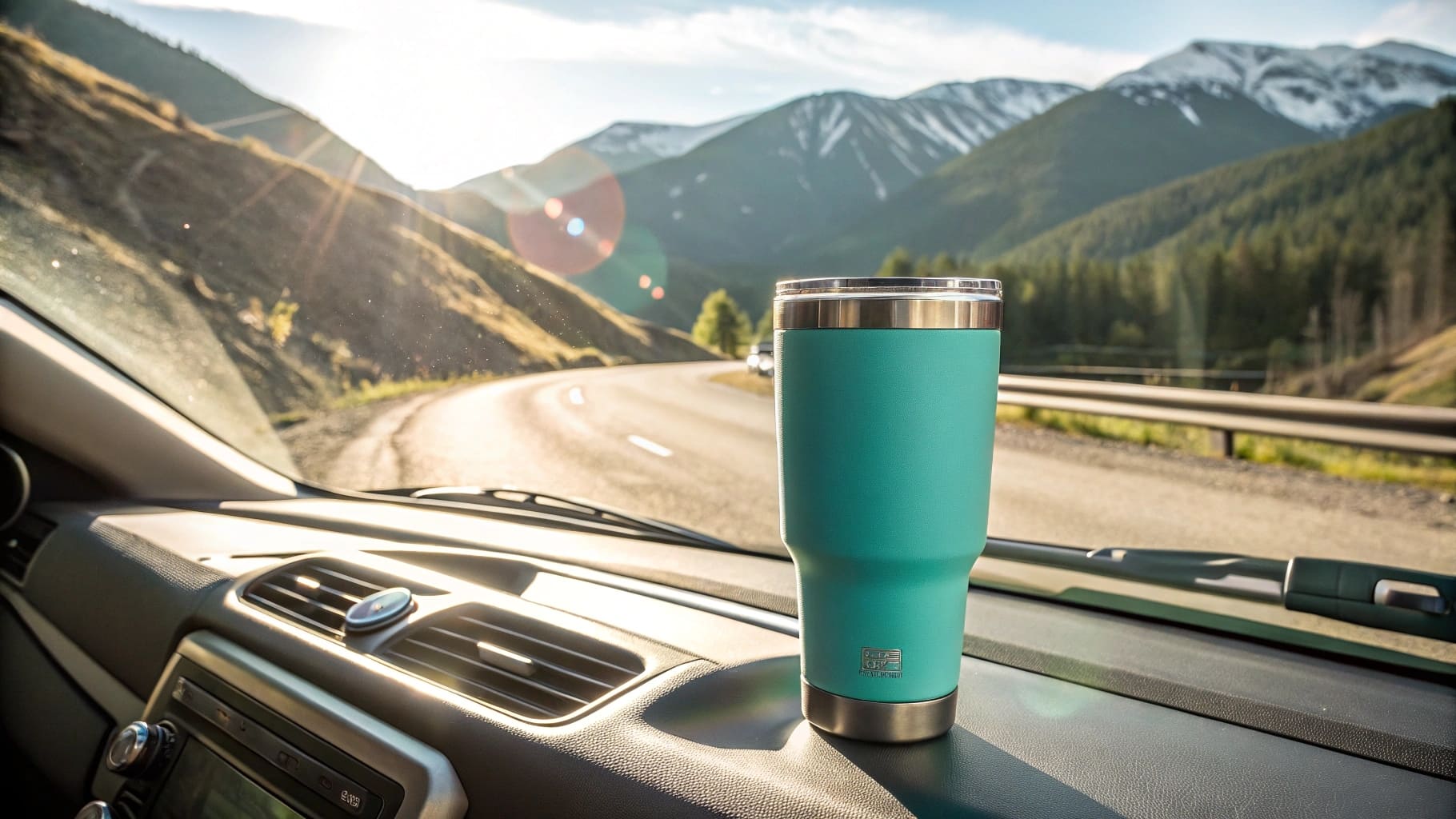
The concern about lead in drinkware is valid, and it's something we manufacturers take very seriously. It's important to understand where and why lead could be present, and how responsible companies like Icobottle prevent any risk.
Where Lead Might Be Found (and How It's Managed):
The primary area of concern for lead has been the sealing dot on the exterior bottom of some double-walled, vacuum-insulated stainless steel cups4. This dot is created by a solder used to seal the small hole through which air is evacuated to create the vacuum.
- Traditional Solder: Historically, some solders used for this purpose contained lead.
- Modern Practices & Safety:
- Encapsulation: Even if a lead-containing solder is used for this external sealing point, it is (or should be) completely covered and sealed off by a durable, non-leaching protective layer or an additional stainless steel base cap. This prevents any direct contact with the user or surfaces.
- Lead-Free Solder: Increasingly, manufacturers, including Icobottle, are using lead-free solders for this sealing process. This eliminates the concern at its source.
- No Lead in Food-Contact Areas: It's crucial to understand that the stainless steel material itself (the inner and outer walls of the cup that contact beverages and your hands/mouth) is not the source of lead. High-quality food-grade stainless steel does not contain lead.
What B2B Buyers Should Do:
As a procurement officer or brand owner, you should:
- Ask your supplier directly about their sealing process and whether they use lead-free solder.
- Request test reports for lead content, specifically looking for compliance with standards like California Prop 655 in the US, which has very strict limits for lead.
- Verify physical samples.
At Icobottle, we are committed to lead-free construction. We use lead-free solder alternatives or ensure that any sealing point is thoroughly and safely encapsulated, far exceeding standard safety requirements. Ensuring our products are verifiably lead-free is a cornerstone of our commitment to quality and safety, directly addressing the insights many buyers now prioritize. We ensure that our cups meet stringent safety standards, because your customers' health and your brand's reputation are paramount.
Are Stainless Steel Cups Safer Than Plastic?
Problem: Choosing between stainless steel and plastic cups for your brand? Agitation: You want the absolute safest option for consumer health and the environment. Solution: Stainless steel generally comes out ahead in safety.
Generally, yes, stainless steel cups are considered a safer option than many plastic cups. They don't contain chemicals like BPA or phthalates found in some plastics, which can potentially leach into drinks and cause health concerns.
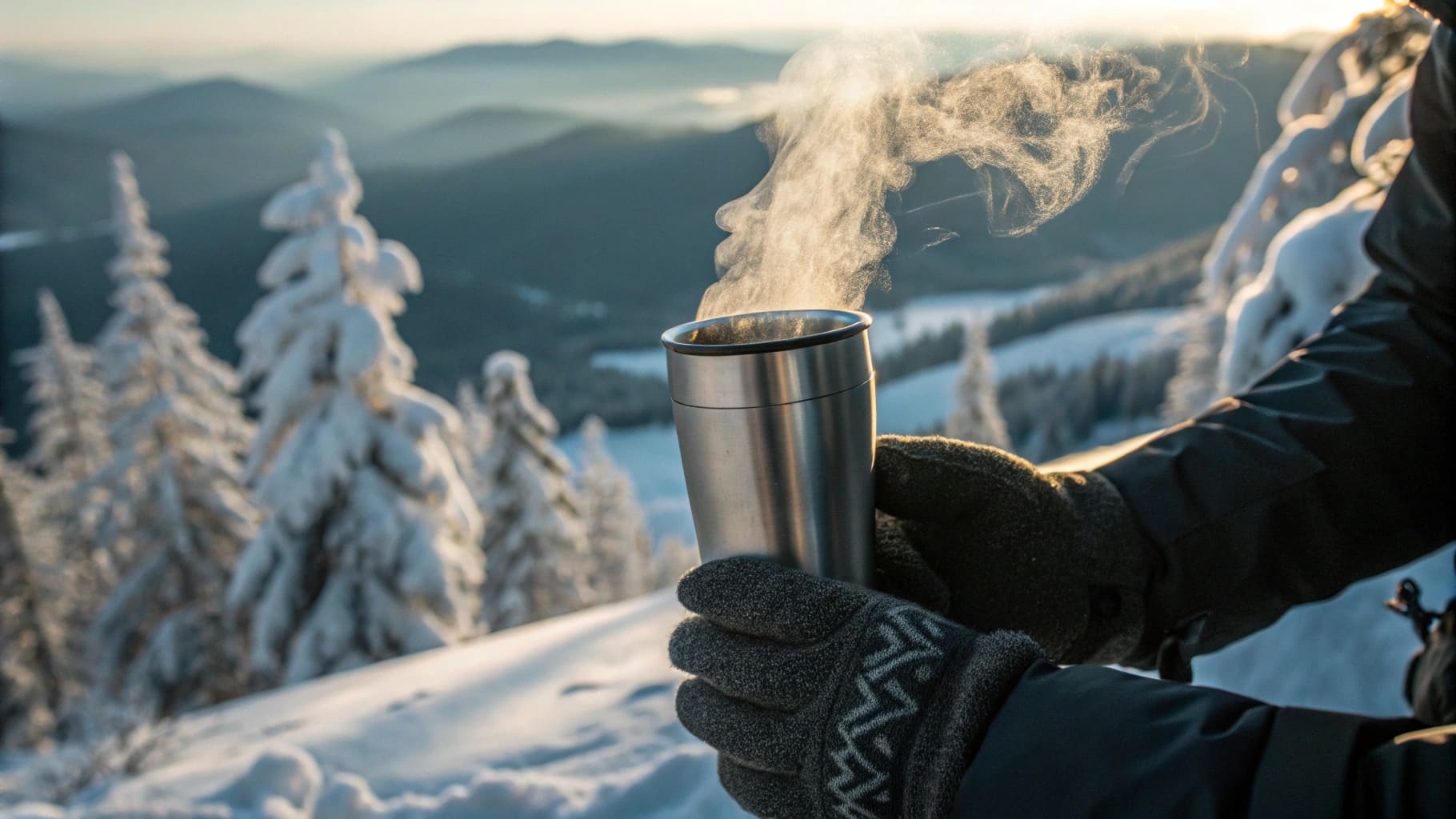
When choosing materials for drinkware, safety is a top priority for consumers and therefore for the brands that serve them. Let's compare stainless steel and plastic on key safety and health aspects.
Chemical Leaching:
- Plastic: Many types of plastic, especially older or cheaper varieties, can contain chemicals like Bisphenol A (BPA), phthalates, and other endocrine disruptors. These chemicals can leach into beverages, particularly when the plastic is heated (e.g., hot coffee, dishwasher) or if the drink is acidic. Even BPA-free plastics can sometimes release other estrogenic chemicals. Microplastic shedding is also an increasing concern.
- Stainless Steel: Food-grade stainless steel (like 304 or 18/8) is inert. This means it does not react with food or beverages and does not leach any chemicals. It's naturally free from BPA and phthalates.
Durability and Hygiene:
- Plastic: Plastic cups can scratch easily. These scratches can harbor bacteria and become difficult to clean thoroughly. Plastic can also degrade over time, becoming brittle or discolored.
- Stainless Steel: Stainless steel is highly durable and resistant to scratches, although fine scratches can occur with heavy use, they don't typically compromise hygiene if cleaned properly. Its non-porous surface is easy to clean and sanitize.
Heat Stability:
- Plastic: Some plastics can warp or even melt when exposed to high temperatures. More concerning is that heating can increase the rate of chemical leaching.
- Stainless Steel: Stainless steel is extremely stable at high temperatures. It won't warp or release fumes when filled with hot liquids or washed in hot water.
Environmental Impact (Relating to Safety):
While not a direct health impact from drinking, the environmental persistence of plastic contributes to broader ecological health issues. Microplastics are now found throughout the food chain, which is an indirect safety concern. Stainless steel's durability and recyclability make it a more environmentally sound choice in the long run, contributing to a healthier planet.
Conclusion on Safety:
For everyday use, particularly for hot beverages or for long-term reusability where hygiene is critical, stainless steel offers clear advantages over most plastic alternatives. This is why many health-conscious consumers and brands are making the switch. As a supplier, Icobottle champions stainless steel for its superior safety profile, ensuring peace of mind for our B2B clients and their end-users. This aligns with the market's shift towards products that are demonstrably safer and more sustainable.
| Feature | Stainless Steel | Plastic (General) |
|---|---|---|
| BPA/Phthalates | No | Potentially, in some types |
| Chemical Leaching | Very low risk (inert) | Higher risk, especially with heat/age |
| Durability | High | Moderate to Low (scratches easily) |
| Hygiene | Easy to clean, non-porous | Scratches can harbor bacteria |
| Heat Resistance | Excellent | Can warp/leach with heat |
Conclusion
Sourcing quality stainless steel cups means checking materials, safety certifications, and supplier reliability. At Icobottle, we help you navigate these details, ensuring you receive top-quality, safe, and sustainable products.
-
Explore this link to understand the benefits of 18/8 stainless steel, ensuring safety and quality in your drinkware. ↩
-
Learn about food-grade stainless steel and its significance in ensuring safe drinking experiences for consumers. ↩
-
Understanding certified food-grade materials is crucial for ensuring the safety and quality of products, especially in food-related industries. ↩
-
Discover the technology behind vacuum-insulated stainless steel cups to appreciate their design and safety features. ↩
-
Learn about California Prop 65 to understand its impact on product safety and lead regulations, crucial for informed purchasing decisions. ↩

